II. Development of Fine Agriculture
(1) DEVELOPMENT OF A MODERN FOOD INDUSTRY
The COA implemented a paddy/upland field utilization adjustment follow-up plan, instituted crop rotation and fallow measures, and adjusted the country's rice-growing areas to 237,000 hectares in order to achieve the goal of balanced supply and demand under the food security system. The COA put up 2,401 hectares of certified stock seed rice fields and extended areas to 160,000 hectares in order to upgrade the quality of domestic rice. Rice quality contests and rice sales competitions were conducted to encourage farmers to produce high quality rice. The COA held four "New Rice Harvest Festival" activities and assisted domestic exporters in selling 108 tons of rice to Japan. 
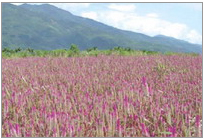
The COA assisted the coarse grain industry to develop quality grains, and had developed 14 new varieties of coarse grain. About 180 items of quality tests on processed goods were performed, assisted the production- marketing of sweet potato and peanuts by improving 210 hectares and performed organic coarse grain cultivation demonstrations on 15 hectares, put up 6 model areas to promote new varieties of peanuts and sweet potatoes and 103 hectares of grade 3 seed peanut fields, assisted farmers to use quality seedlings to cultivate competitive varieties. The COA assisted the horticulture industry to grow and improve its quality and competitiveness, by putting up 3,685 hectares of orchards for the growing export-quality fruits such as mangoes, pineapples, bananas, litchis, papayas, citrus, grapes, and top-grafted pears, developed 14 varieties of competitive and quality fruit trees and 1,078 hectares of modified varieties, promoted 1,046 hectares of agricultural-industrial cooperation of growing tea and herbs and cultivated 520,000 plants of Dendrobium huoshanense. The COA also assisted growing vegetables and flowers using cultivation facilities, promoted cultivation facilities covering 23.8 hectares for economic flowers such as chrysanthemum, rose, oncidium, and prairie gentian (eustoma), and strengthened the post-harvest processing of flowers to improve quality.
To integrate distinctive local industrial cultures in the development of agricultural processing industries, the COA assisted 13 rural food processing plants and 9 agricultural satellite factories, developed primary processing and cutting of high-grade vegetables, and expanded marketing channels. For the development of rural wine-making business, the COA also inspected and approved 6 rural tourist wineries and 6 types of liquor products.
(2) PROMOTING GLOBALIZATION OF THE FISHING INDUSTRY
For the lasting operation of Taiwan's fishing industry, the COA actively participated in regional and international fisheries organizations of the 3 big oceans. In particular, the COA took part in the activities of international tuna management organizations including the "Western and Central Pacific Fisheries Commission (WCPFC)," "Inter-American Tropical Tuna Commission (IATTC)," "Commission for the Conservation of Southern Bluefin Tuna (CCSBT)," and "Indian Ocean Tuna Commission (IOTC)." The COA participated in 21 international fisheries organization conferences in 2004. Based on the principle of reciprocity, the COA engaged in fisheries cooperation with 26 countries, giving Taiwan a greater access to fishing grounds. Taiwan held 16 bilateral fisheries talks with fisheries cooperative nations including the USA and Japan in 2004, and signed the "Taiwan-Indonesia Marine Fisheries Cooperation Memorandum of Understanding" with Indonesia and the "ROCSaint Vincent Fisheries Cooperation Letter of Intent" with St. Vincent. The COA also offered practical fisheries training classes in an effort of strengthening international fishing ties, and assisted in training 5 fishing technicians for Kiribati.
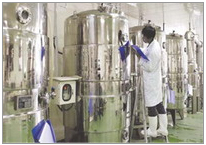
In respond to the regulations stipulated in the international high seas fisheries resources management organization agreement, the COA actively promoted measures related to "Liability Fisheries," including substantiate catch statistics, research and evaluation of fishing organisms and resources, establish catch quota and a catch certificate management system, establish a Vessel Monitoring System (VMS) and catch reporting software, implement an observation system, reinforce fishing boat patrol and field inspection, educate and train fishing crew, and monitor the movements of fishing boats and crewmen at foreign bases.
(3) ESTABLISHMENT OF A HIGHLY EFFICIENT LIVESTOCK AND POULTRY INDUSTRY SYSTEM
In order to strengthen the production-marketing system and improve the quality of products, the COA put up 26 pilot farms for the new hog breeding system to upgrade the standard, including early isolation of piglets, and production by batch and by stages system. The COA also established an automated, computerized, and standardized raising mode to increase the survival rate of hogs in the farm. Other efforts included the selection of breeder hogs with high meat quality genes, assisted 2 strategic alliance systems in producing and marketing high-quality "White Textured Pork," assisted 5 strategic alliance systems in producing and marketing quality black-haired pork, and expanded the marketing channels by supervising the vending system of quality pork brand, such as "Natural Pork" and "Hualien Net House Pork", in 6 supermarkets including Sung Ching Supermarket.
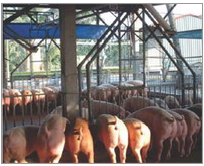
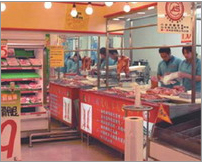
As for grazing animals, the COA continued implementing its certification system for domestic dairies and promoting dairy farm's contract marketing systems in order to stabilize the fresh milk market. With the efforts of improving the performance of dairy cattle herds, the COA assisted 262 dairy cattle raisers to use reports, feed cows with total mixed rations (TMR), and treat or cull cows at appropriate times in order to reduce production costs. The COA assisted 4 organizations including the Taipei Livestock Meat Industry Association to establish cattle and goat slaughterhouses that meet with the regulations of the Livestock Law to supply wholesome domestic beef and lamb's meat.
As for the poultry industry, the COA continued to strengthen the function of Production-marketing information system for broiler chickens, native chickens, eggs, geese, local Muscovy ducks, and ducks' eggs, and performed information analysis and determination. This system achieved uninterrupted daily transmission of data, and set up a warning system to alert producers to adjust their production plans in the event of any abnormalities occurred, in order to stabilize market prices. To improve the marketing channels and distribution systems of native chickens, the COA encouraged the establishment of 6 regional poultry slaughtering facilities, assisted the establishment of Taiwanese egg network, improved livestock and poultry marketing efficiency, and initiated diversified product consumption channels. After eradicating the epidemic of low-pathogenic Avian Influenza, the COA worked vigorously to expand the poultry export market. Over 1,500 tons of chicken and duck meat were exported to Japan after reopening the market to fresh Taiwanese poultry products in September 2004.
(4) STRENGTHENING INTERNATIONAL MARKETING OF AGRICULTURAL PRODUCTS
After selecting phalaenopsis orchids, Oolong tea, Taiwan tilapia, and mangoes as Taiwan's main export products, the COA improved the supply chain, and strengthened foreign marketing related measures for the growth of export industries. 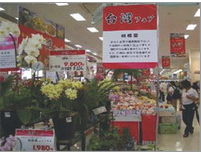
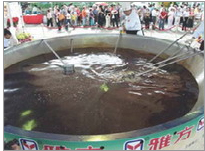
The COA established Taiwanese Fine Agricultural Product displays and sales in Japan and Hong Kong in 2004, promoted Taiwanese fine agricultural products, took orders, organized sales promotions, and integrated the function of local channels with logistics firms.
The COA implemented the following publicity and promotional plans in order to help domestic industries seize export opportunities:
1. Taiwan Rice: Taiwan's rice reopened the Japanese market after 33 years of absence. The COA led local rice growers in participating the produce and food exhibition in Japan. The quality and taste of Taiwan rice won praises.
2. Taiwan Poultry: Taiwan's poultry was marketed again in Japan in September, 2004. The COA led firms to trade negotiations held in Tokyo and Osaka.
3. Phalaenopsis Orchids: The United States had approved the import of phalaenopsis orchids with medium from Taiwan since June 14 in 2004. Four domestic orchid growers have already passed US certification, and the first batch of phalaenopsis orchids with medium will be shipped to the United States in the near future. 
4. Taiwan Papayas: Japan approved the import of Taiwan papayas after 1st of December. The COA had already completed its publicity and image-building plans to boost its popularity in Japan. Other significant measures included participation in international food shows and other trade shows, The COA sponsored "Taiwan Agricultural Produce Festival" activities in supermarkets in Japan, Hong Kong, China, and the United States, researched and developed quarantine processing techniques for phalaenopsis orchids, mangoes, Indian jujubes, papayas, wax apples, pineapples, and Australian sugar apples, etc., installed export inspection and quarantine facilities for agricultural products, performed training for agricultural export experts, and completed the agricultural product export information webpage in Chinese, English, and Japanese (http://trade.coa.gov.tw).
(5) STRENGTHENING INNOVZTIVE AGRICULTURAL TECHNOLOGY
In order to upgrade our agricultural research standard and increase competitiveness, the COA proposed to reorganize its 9 research institutes into a non-departmental national agricultural institute. The proposal was already approved by the Executive Yuan and submitted to the Legislative Yuan on April 28, 2004 for final approval. Preparations for this reorganization are generally progressing well. The COA allocated a budget of NT$3.492 billion for its 766 R&D projects in agricultural science and technology. These projects had achieved very impressive results. In biotechnology, transferring the root nodule, phosphate-solubilizing microorganism and mycorrhizae fungi propagation technology to the industry for mass production has been applied on over 30,000 hectares, a new cell cultivation method was successfully used in growing Taiwanese yew cells containing a high taxol content, and this technology was also transferred to the industry for commercial production. As to other R&D, 24 new varieties were developed in agriculture, which were 7 new varieties of rice, 4 new varieties of fruit trees, 9 new varieties of vegetables, 3 new varieties of flowers, and 1 new variety of red sugarcane. In forestry R&D, apart from continuing to monitor the hydrology of the Chiufen Ershan area, researchers had developed bamboo charcoal products and bamboo vinegar manufacturing technology, and assisted manufacturers in building 2 bamboo charcoal kilns; each kiln made a profit of NT 80~120 thousand per month. In fisheries R&D, researchers conducted a survey of fishing resources around Taiwan and participated in an international assessment of migratory fish species, and developed a new ornamental fish variety by controlling the pigments of zebra fish with Rho protein. In livestock R&D, researchers completed a DNA gene pool affecting pork texture and quality, and analyzed the marble texture of pork. Adjustment mode of the breeding period of breeder geese was completed, allowing geese to increase the quantity of eggs laid during the non-breeding season from 12 to 60 eggs. In order to apply the R&D results of the COA in the industry, the COA executed around 140 industrial-university cooperative projects in agriculture in the last three years, and invested an annual budget of around NT$200 million. As to intellectual property rights management, the COA obtained 28 patents, completed 51 technological transfer projects, and earned NT$9.53 million in technological transfer royalties.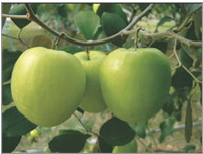
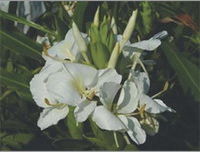
(6) AGRICULTURAL TECHNOLOGY PARKS
The COA made plans to build a "Central Government-dominated Agro-technology Park" and 4"Local Government-dominated" Agro-technology Parks" in accordance with the "Agricultural Biotechnology Park Plan" approved by the Executive Yuan on February 25, 2003. The "Agro-technology Park Establishment and Management Regulation" was promulgated and executed on April 7, 2004, and authorized the drafting of 6 related regulations, 4 of which had already been promulgated. Land for the central government dominated "Agro-biotechnology Park" in Pingtung County was acquired, leveled, and conducted environmental evaluation. The first stage of the project involved 26 hectares at the Haifeng site. At the end of December 2004, 22 companies were approved to occupy plant sites, and 15 of them had already posted security deposits. Site development and recruiting activities are currently proceeding at a vigorous pace. The following is an overview of the 4 local government-dominated parks: 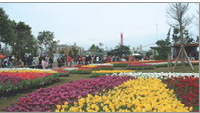
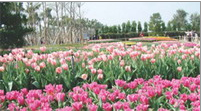
1. The service center of "Taiwan Orchid Biotechnology Park" in Tainan County and the foundation engineering of 23 hectares of the first stage in the park were completed. Twelve companies were given approval to build greenhouses on leased sites, and 5 of them had already started construction. Construction development of 35 hectares in the second stage is underway, and 14 companies of them had registered and approved.
2. The "National Flower Park" in Changhua County held the "2004 Taiwan Flower Exposition" at the beginning of 2004, attracting over 1.58 million visitors. The park also completed plans for a dedicated floriculture zone, and the county government has selected the location for 7 satellite model areas. The park also designed key service area and scenic nursery stock production area.
3. With regards to the "Spice and Herb Biotechnology Park" in Chiayi County, in principle, the feasibility of private companies participated in public construction and its preliminary plan was already approved by the Executive Yuan on December 23, 2004, and conducted general consultation and tender.
4. The government made an integrated plan for the "Marine Biotechnology Park" in Ilan County.
(7) ESTABLISHING AGRO-INDUSTRY VALUE CHAINS
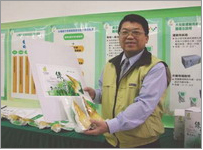 Facing intense global competition in today's knowledge-based economy, the COA should take globalization layout into account and establish a market and consumer-oriented industrial value chains, in order to upgrade its industrial competitiveness and increase farmers' income. Industrial value chains must be designed to meet consumers' needs. To create competitive advantages, all the marketing activities and processes of agricultural products or services starting from producers to consumers should be carefully planned, implemented, and managed. Aside from promoting corporatization of agricultural management and creating fine agricultural environment, assisting farmers to integrate their resources and know-how according to the product features, targeted customers, geographical conditions, and marketing channels, the COA is also active in promoting regional agricultural development models, assessing regional agricultural resources and key industries, and planning to develop an operating system, standard operating mode, professional marketing knowledge, and business management skills. The value chain concept and approach is quite successful in Taiwan. For instance, the "Strategic Alliance of Rhizome Industry in Yunlin, Chiayi, and Tainan Region" led by the Tounan Farmers" Association stretched over the root and stem vegetable growing areas in 7 towns and townships. This strategic alliance kept the poor economic scale from individual farmers and further expanded their international marketing, leading the industry towards a positive development.
Facing intense global competition in today's knowledge-based economy, the COA should take globalization layout into account and establish a market and consumer-oriented industrial value chains, in order to upgrade its industrial competitiveness and increase farmers' income. Industrial value chains must be designed to meet consumers' needs. To create competitive advantages, all the marketing activities and processes of agricultural products or services starting from producers to consumers should be carefully planned, implemented, and managed. Aside from promoting corporatization of agricultural management and creating fine agricultural environment, assisting farmers to integrate their resources and know-how according to the product features, targeted customers, geographical conditions, and marketing channels, the COA is also active in promoting regional agricultural development models, assessing regional agricultural resources and key industries, and planning to develop an operating system, standard operating mode, professional marketing knowledge, and business management skills. The value chain concept and approach is quite successful in Taiwan. For instance, the "Strategic Alliance of Rhizome Industry in Yunlin, Chiayi, and Tainan Region" led by the Tounan Farmers" Association stretched over the root and stem vegetable growing areas in 7 towns and townships. This strategic alliance kept the poor economic scale from individual farmers and further expanded their international marketing, leading the industry towards a positive development.
